Approval management software turns your review processes into smooth, predictable workflows.
With the right tool, you can easily see who needs to approve what (and by when), helping you reduce delays and complete projects faster.
In this guide, you’ll find the best approval management tools and see how they keep projects moving. You’ll also learn to integrate them with other apps to create seamless operations.
Key takeaways from approval management software
Approval management software can be a simple tool for making approval steps or a complete system that handles the approval process.
Its main advantage is replacing slow, manual approvals with automated routing to the right people, preventing delays and clarifying responsibilities.
Basic tools are fine for simple approvals, but growing businesses need more advanced features, like setting up special rules and keeping a history of all approvals.
You can connect approval tools with a CRM like Pipedrive to automatically start the next steps after approval. Start your 14-day free trial to see how it can speed up your sales and marketing work.
What is approval management software?
Approval management software stops the back-and-forth of getting permission at work by automatically moving requests through each step.
Waiting for approvals slows down projects, and you can miss sales opportunities.
Instead of chasing people through email, these tools create workflows that send requests to the right people. They’re like a digital assembly line for business decision-making.
When someone asks for approval, the software sends it to the right person and gives them a nudge if the due date is near. Once they approve it, the tool moves it to the next step or kicks off the next action.
Here are the key problems approval management software streamlines:
Approval management problems | How approval management software helps |
Business bottlenecks and delays | It automatically sends requests to the right people and reminds them, so your small business projects don’t get held up |
It keeps a perfect history of who approved what and when, which is essential if you have to follow industry rules | |
Lack of visibility | It gives you a live dashboard that shows the status of every approval, so you can see where things are stuck |
Manual processes | It gets rid of messy email threads and paper forms with automatic steps and digital signatures |
Inconsistent procedures | It makes sure everyone follows the same approval steps for every request, even as you hire new people |
Lost requests | It keeps all approvals in one place, so you can easily search for them and get updates |
Small businesses use automated approval management software for everything from automated campaign reviews and budget requests to contracts and content marketing.
These 11 tools and platforms help small and medium-sized businesses (SMBs) speed up their operations.
1. Smart Docs: best for sales documents inside your CRM
Smart Docs is Pipedrive’s built-in document management and e-signature tool.
Sales teams can create branded proposals, quotes and contracts directly from their customer relationship management (CRM) system, without switching between different apps.

You can generate sales documents using deal data, send them for approval, track client engagement and collect legally binding e-signatures in one place.
How businesses use Smart Docs:
Build professional business proposals, quotes and contracts with CRM data auto-filled
Set up internal approval flows before sending documents to prospects
Track when clients open, view and sign documents
Collect secure e-signatures without third-party tools
Keep all documents stored and linked to deals in Pipedrive
Use fields and templates for invoices, orders and sales proposals, to save time on recurring agreements
Generate revenue-focused insights by tracking document status across the pipeline
Smart Docs works for sales teams that want everything managed inside their CRM, from document creation to approval and signing. It eliminates the need for external approval workflow management tools and ensures your approvals stay connected to your sales process.
Pipedrive in action: Redlist, a cloud-based operational management company, used separate tools for document creation and e-signatures. After shifting to SmartDocs to handle everything in one platform, it saved each of its reps a full day’s work weekly, resulting in a 200% increase in annual sales.
2. ApprovalMax: best for finance and procurement approvals
ApprovalMax handles money-related approvals, like paying bills or approving the company’s purchases.
It connects to your accounting software to ensure you approve everything before officially recording the money.
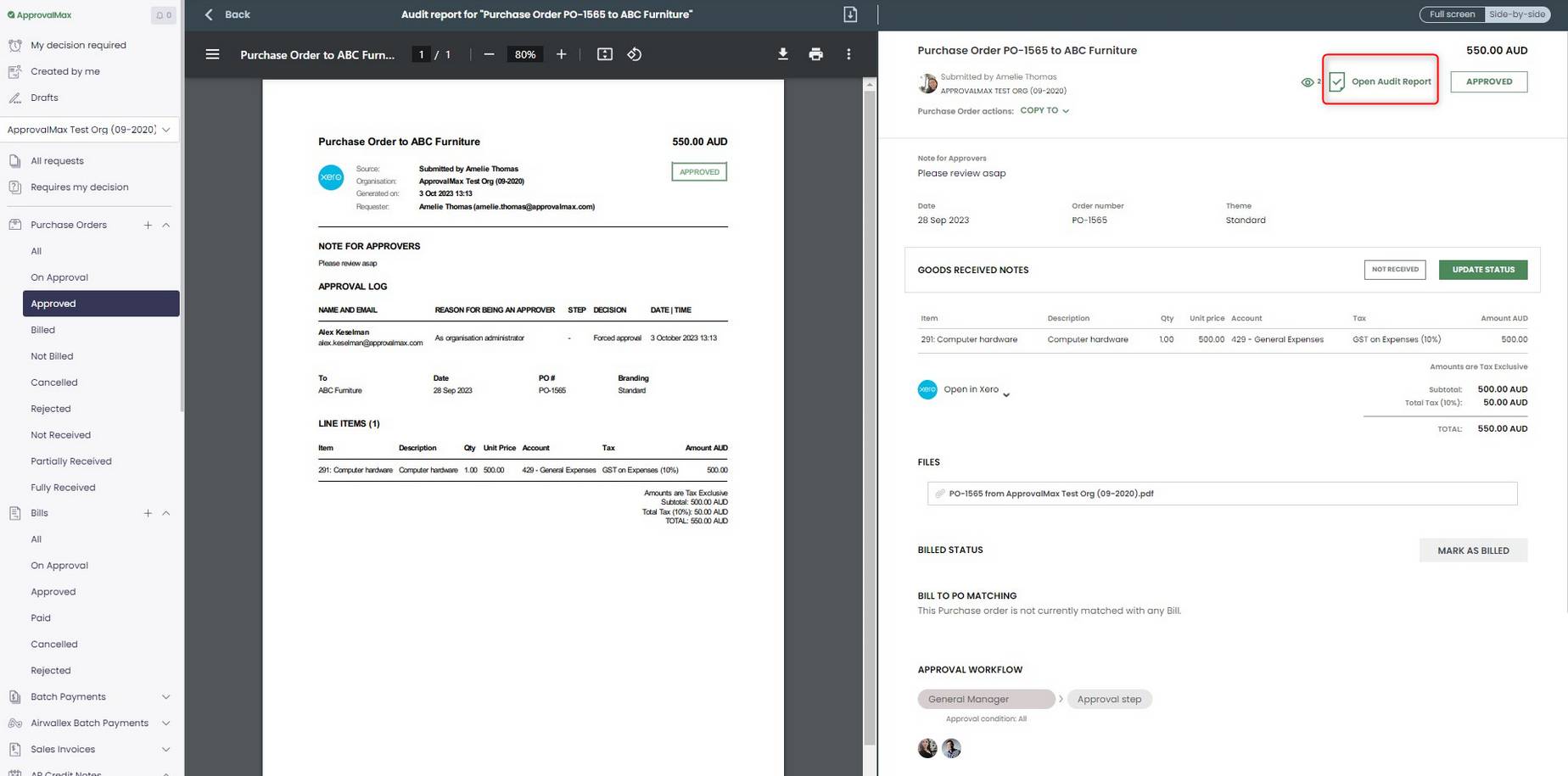
The tool sends requests to people based on aspects like cost or department. Approvers get an email notification and can approve things right away.
How businesses use ApprovalMax:
Create approval steps that automatically go to the right people based on rules you set
Set spending limits so the tool approves small purchases fast, but bigger ones need a manager to sign off
Connect with accounting tools like Xero and QuickBooks so your approved payments automatically update
Track the status of all requests to see what’s waiting and who is causing delays
Create official reports that show the whole history of approvals for money check-ups
Use the mobile app to approve urgent requests when you’re not at your computer
Let a teammate approve things for you when you’re on holiday, while still keeping control
ApprovalMax works for businesses that process regular transactions and need clear audit trails for accounting compliance and reporting finances.
3. Kissflow: best for custom workflow automation
Kissflow lets you build any kind of approval process without needing to code.
Its drag-and-drop builder allows you to create approval steps for anything, from HR onboarding requests to marketing tasks.

With Kissflow, you design your forms and set up rules to send them to the right people. A dashboard shows how long each step takes.
How businesses use Kissflow:
Build custom approval steps for HR task management, like holiday requests or new employee setups
Create marketing approval flows for new ads or social media posts
Set up IT request steps for new software or computer access
Get real-time reports to see how long approvals are taking and find ways to be more efficient
Connect with collaborative tools like Slack and Google Workspace to send updates to stakeholders
Kissflow suits businesses that need flexible approval workflows across multiple departments rather than focusing on one specific area. The workflow builder makes it easy to change processes as your business requirements change.
4. ProcessMaker: best for complex business process automation
ProcessMaker helps businesses with complex approval steps that need to follow strict rules.
It uses a visual designer to map out processes where requests might go down different paths depending on the situation.
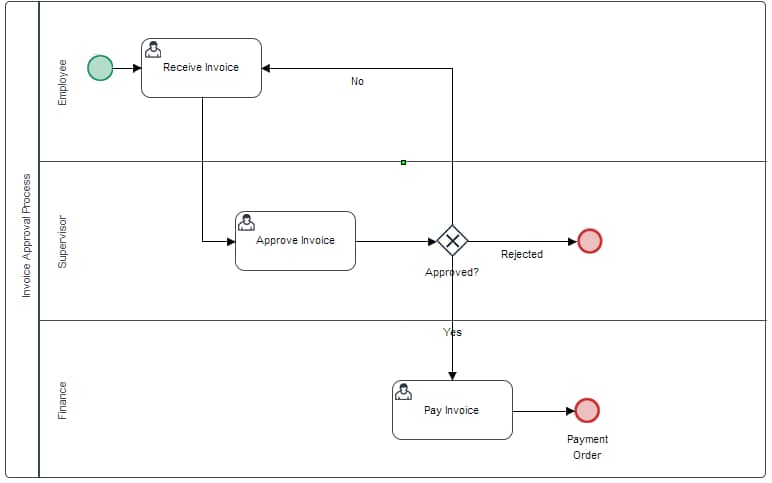
The software helps handle complex rules, like approvals that change based on cost, location or regulations. It also manages situations where many people need to approve something simultaneously.
How businesses use ProcessMaker:
Create approval steps that change depending on the request’s details
Cover complex approvals where teams from legal, finance and operations all need to check a contract
Build workflows that follow essential rules, like GDPR (for marketing privacy) or HIPAA (for healthcare organizations)
Set up systems where different people have different levels of approval power
Connect to other tools to get live information to help make approval decisions
Automatically give an approval task to someone else if the main person is away or misses the deadline
ProcessMaker works for organizations with complicated approvals that need strong cybersecurity and governance features. The platform handles situations that many simpler sales workflow tools can’t manage.
5. Nintex: best for document-heavy workflow approvals
Nintex focuses on approval processes involving many documents, forms and content management reviews.
It integrates deeply with Microsoft Office and SharePoint to create workflows within your team’s tools.

The software tracks changes, manages version control and ensures review before you publish or sign documents.
How businesses use Nintex:
Create document approval steps right inside Microsoft Word, Excel and SharePoint
Set up reviews where different people need to check and approve content in a specific order
Track document versions so everyone is always working on the latest one
Send marketing work through design, legal and management for review
Let managers approve or reject things directly from Microsoft Teams or Slack
Keep a complete record of all approvals for your files
Nintex works well for businesses that create and review many documents. It also suits teams already using Microsoft tools that want automated approval workflows built into their existing document processes.
6. Zapier: best for connecting apps into a simple approval chain
Zapier automates approval workflows by connecting different business and sales tools.
It creates approval chains across applications instead of building workflows within one platform.

You can build a “Zap” (an automated workflow) in minutes without any code. For example, when someone submits a new entry in a form, Zapier can automatically send a custom approval email or Slack message.
How businesses use Zapier:
Automatically start actions in other apps after an approval, like updating a database
Create approval steps between apps that don’t usually connect
Set up automatic data transfers so you don’t have to copy and paste information
Save completed approvals in cloud storage like Google Drive
Use Zapier’s own tools to build a simple dashboard for tracking your approvals
Zapier works for businesses using many apps that want to connect their approval processes without switching to a single platform. It bridges gaps between existing systems rather than replacing them.
Pipedrive in action: Falcon, a social media reporting platform, used Zapier to connect Pipedrive’s CRM with apps like Google Docs and ORBTR, a marketing automation platform. The integration created a seamless workflow that helped Falcon reach 98% customer satisfaction and continues growing efficiently.
7. Asana: best for marketers managing project-based approvals
Asana is a no-code project management tool that lets you handle approvals within your projects.
Teams can ask for sign-offs on their work from project managers, like designs or marketing ideas, without leaving the app.
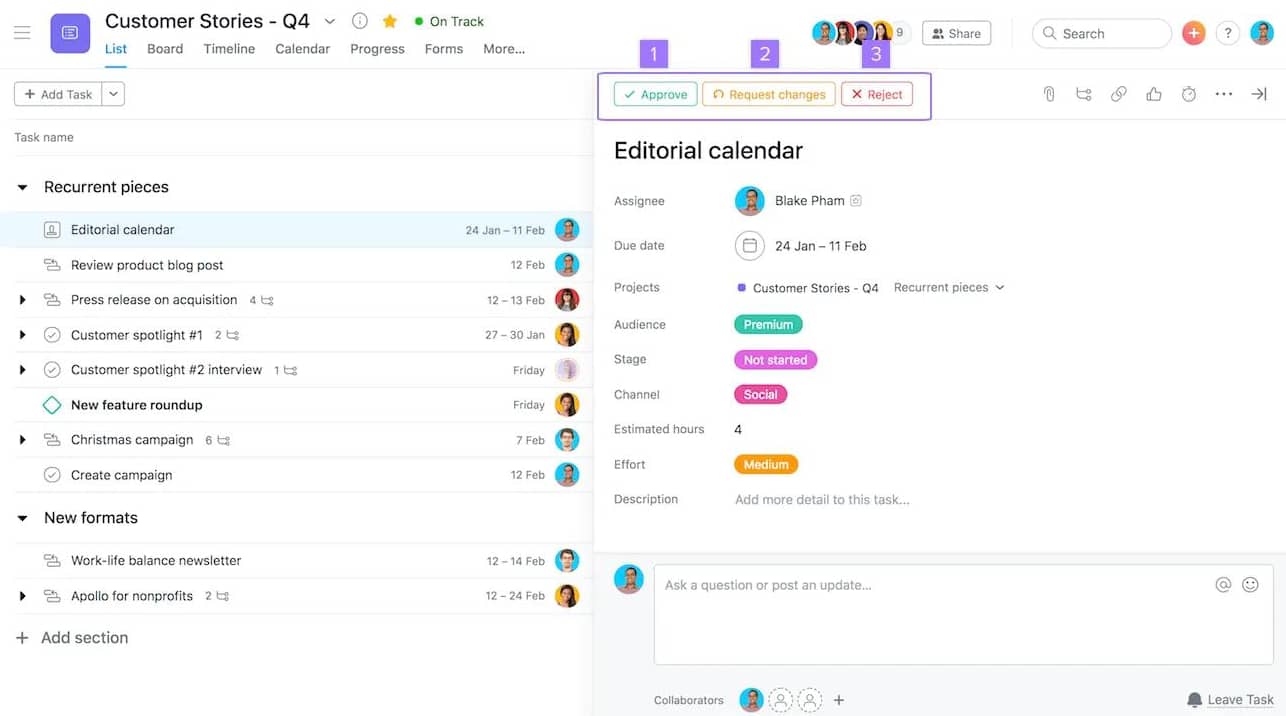
The software treats approval requests like tasks with due dates and owners. You can use special tags to mark a task’s status (like “Needs Review” or “Approved”) and automatically pass it to the next person.
How businesses use Asana:
Create approval tasks for creative work, marketing campaigns and project deliverables
Review and approve content designs and videos using built-in markup tools
Set up approval templates for recurring work like blog posts and campaign launches
Assign backup approvers who take over when primary reviewers are busy
Connect approvals to other tasks so work can’t continue until reviews finish
Track how long different types of approvals take across projects
Asana works for teams where approvals happen as part of bigger projects. It keeps approval discussions connected to project work instead of happening in separate email threads.
8. DocuSign: best for document signing and contract approvals
DocuSign is a tool that helps you get electronic signatures on essential documents like sales contracts.
Teams can send forms for signing, see who has signed and save the final copies securely online.
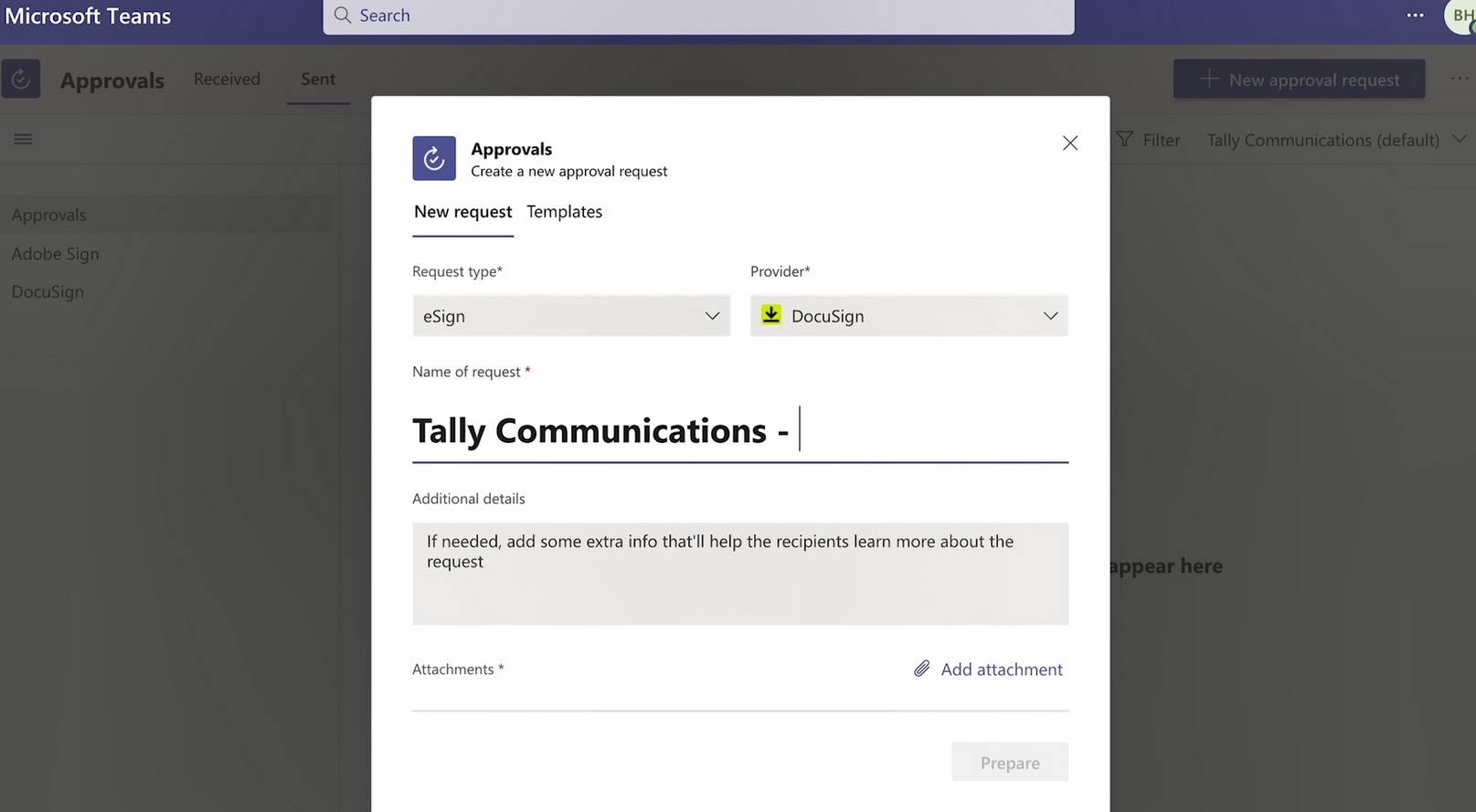
It can handle situations where many people need to sign a document in a strict order. DocuSign also manages approvals that need to happen before the signing, like a manager’s review.
How businesses use DocuSign:
Send sales contracts to customers and then automatically send them to a manager to sign
Track the status of all documents and send automatic reminders to people who haven’t signed yet
Store signed documents safely with a complete history of who signed and when
Create templates for common agreements, like job contracts
Add approval steps so that a manager or legal team can check a document before it goes out for a signature
Connect signing to other work, so a new process starts as soon as someone signs a contract
DocuSign is a basic and reliable e-signature solution for businesses that need approvals. It replaces paper-based processes and provides the security and required legal standing for high-stakes agreements.
9. Adobe Workfront: best for marketing and workforce approvals
Adobe Workfront is an end-to-end work management app for managing complex projects and email campaigns.
It’s designed for medium and large marketing departments that need to coordinate tasks across many stakeholders, with built-in approval processes.
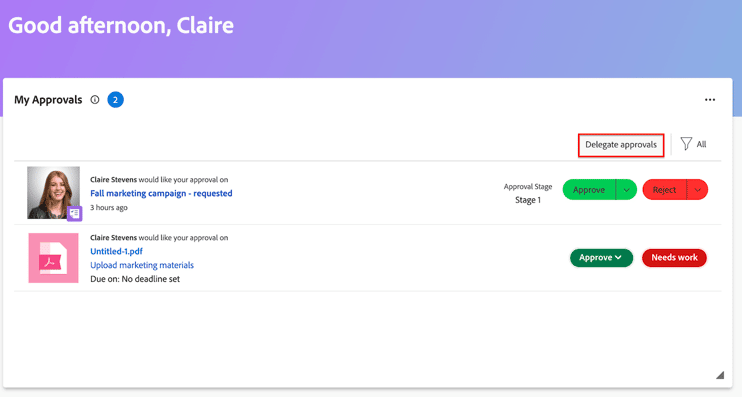
Workfront centralizes everything, including project planning, resource management and creative reviews.
How businesses use Workfront:
Manage big marketing campaigns from start to finish, with different approval steps for writing, design and video
Set up “approval gates” that stop a project from moving forward until someone has reviewed it
Get feedback from many people on one design without getting confused by different versions
Use the online proofing tools to check videos frame-by-frame or compare two designs side-by-side
Workfront suits agencies that manage high-volume creative management teams.
Fast-growing SMBs can also benefit from adopting Workfront as a scalable solution early on, reducing the risk of outgrowing simpler tools and facing a difficult migration later on.
10. Smartsheet: best for spreadsheet-based approval tracking
Smartsheet is a work tool that looks and feels like an Excel spreadsheet but has key features for project management.
Teams can track tasks, set deadlines and create approval workflows without learning an entirely new interface.
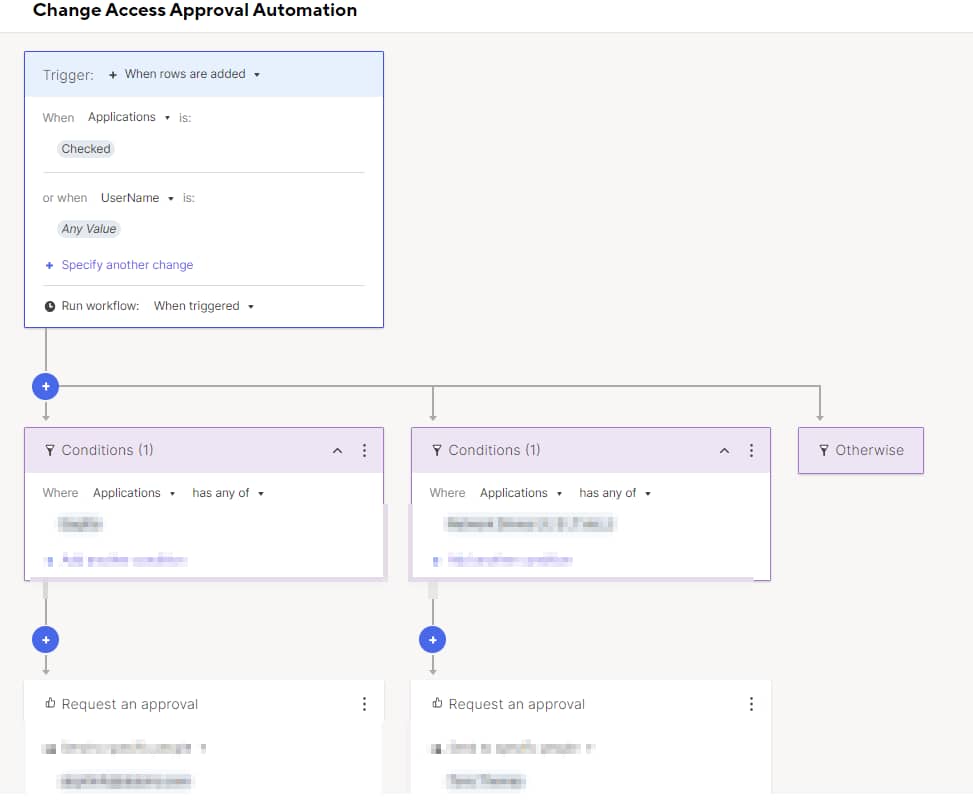
Many managers plan their work in spreadsheets. Smartsheet gives them that familiar setup but with powerful automations. You can make rules that automatically ask for approval when a project is near its due date.
How businesses use Smartsheet:
Organise approval requests in a spreadsheet with columns for status, date and who asked.
Build a project plan and create an approval flow to get the budget and timeline signed off on
Set up email alerts that tell approvers when a new request is ready for them
Use colours to show the status of approvals, so it’s easy to see what’s late
Create charts and reports from your approval data
Give people different levels of access, like “view only” or “can edit”
Smartsheet appeals to teams who already manage approvals through spreadsheets but want to reduce manual work. Operations and corporate finance teams often choose this over more complex workflow software.
11. Airtable: best for flexible database-driven approvals
Airtable is a low-code platform that combines spreadsheets and an SMB database. You can build custom applications (called “bases”) for almost any type of task.

Airtable doesn’t require set processes. You create tables for your projects and team members, then design your approval rules using its automation features.
For example, updating a status from “Draft” to “In Review” can trigger a notification to a specific person for approval.
How businesses use Airtable:
Set up approval databases with fields that matter for your business, such as budget amounts, request types or departments
Switch between different views, like seeing all pending approvals on a calendar or moving requests through a kanban board
Link invoice approvals to other information, like connecting budget requests to specific projects or team members
Automate notifications when someone submits a new request or when approvals sit too long without action
Use asset management functionality to attach files and documents so approvers have all the context they need
Create summary views that show approval patterns across departments or time periods
Airtable suits teams that want control over how they organize and track approvals. It takes more setup than plug-and-play solutions but gives you more power to optimize the system.
Integrating approval management software with your existing systems
You get the most out of an approval system when it seamlessly connects with the tools and platforms you already use.
Integrating your approval platform builds bridges between departments, breaks down data siloes and saves you time on data entry.
For small businesses, this can mean sales approvals automatically update accounting records, or marketing sign-offs trigger tasks in a project management tool.
It also organizes approvals within projects, so teams can see where work is stuck and managers can spot delays before they impact project baselines.
Connecting your approval tool to accounting software is especially useful for finance-related sign-offs. At tax time, you’ll have a complete, unchangeable record of every approval.
Instead of manually copying information between systems, everything flows smoothly, so your small team can focus on growing the business rather than managing paperwork.
You can connect your tools in three main ways:
Integration method | How it works |
Two apps can connect directly without needing a developer’s code. This method only requires a few clicks to authorize the connection. Example: Pipedrive’s CRM integrates directly with many of the tools in this list, including Asana and DocuSign. | |
Integration platforms (middleware) | Providers like Zapier and Make act as universal translators between cloud-based apps. You create “if this, then that” conditions and connect many apps that don’t have native connections. Example: Zapier lets you connect Pipedrive with Kissflow so you can choose custom triggers and actions in your workflows. |
APIs let your developers build direct connections between systems for custom business needs. They offer more control, but you need technical resources to implement them. Example: Pipedrive provides a powerful API that lets you create bespoke integrations with almost any app. |
The goal is to create a seamless flow where an event in one system (like a sales deal moving to the next stage) triggers the correct approval process in another.
Start by connecting your CRM. Adding an approval tool to your CRM workflows helps you get things done faster. Instead of emailing a sales manager to approve a discount, the system can do it for you.
Here are two examples of automations you can make by connecting Pipedrive with your approval software:
Streamline approval for finance. Moving a deal to the “Awaiting payment” stage in Pipedrive can trigger ApprovalMax to send a purchase order or invoice for manager approval.
Speed up legal sign-offs. Once you agree to a deal, moving it to the “Contract sent” stage can trigger DocuSign to send the contract or sales order to the client. After they sign, DocuSign can tell Pipedrive the deal is “Won”.
Here’s what Pipedrive’s workflow automation builder looks like:
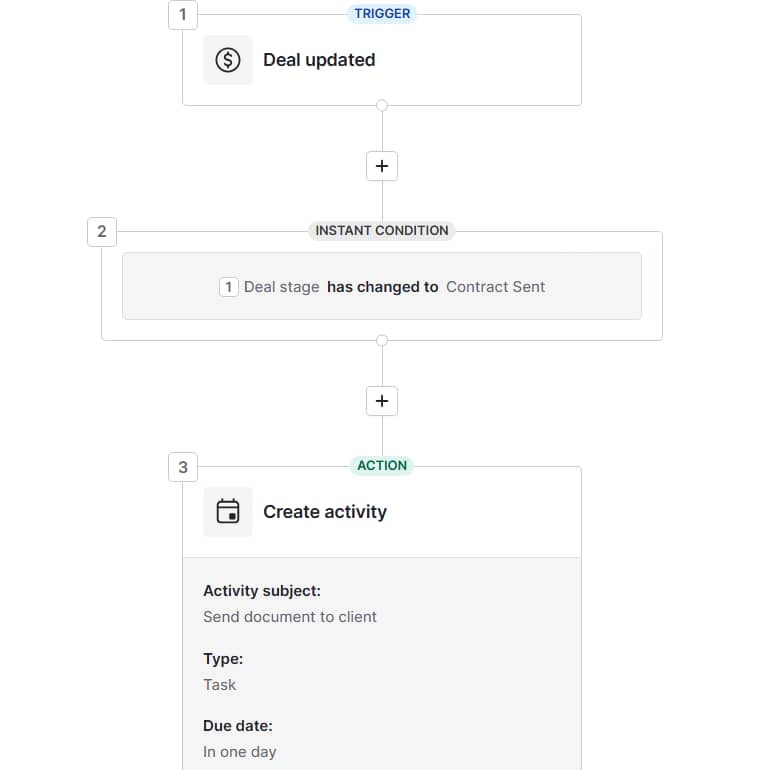
If you’d rather keep everything inside one system, Pipedrive’s own Smart Docs feature makes it possible.
You can create proposals, send them for internal approval, track client engagement and collect e-signatures directly in the CRM,removing the need for external tools altogether.
Crush your manual admin with this sales automation guide
Final thoughts
Approval workflow software stops you from chasing people for answers on essential business decisions.
You can see where every request is stuck, so your small business team avoids time-consuming work and meets deadlines even when juggling multiple projects.
Pick a user-friendly tool that matches how your team works. If you live in spreadsheets, try Smartsheet. If you want everything connected, start with an automation platform like Zapier.
When you’re ready, start a 14-day free trial with Pipedrive to see how its workflow automation feature connects your approvals to your sales pipeline, ensuring your projects boost revenue.











